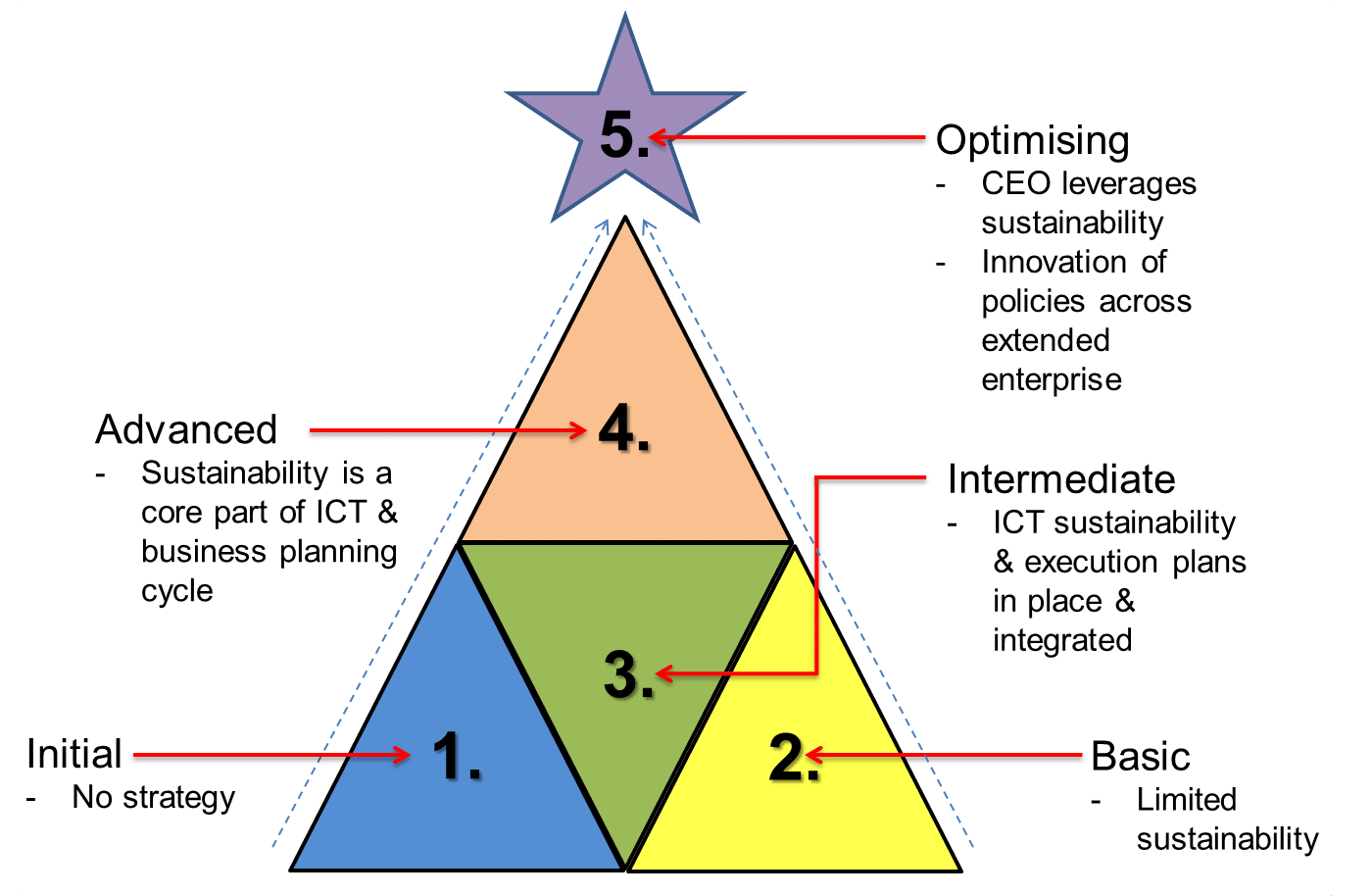What is Green IT?
Green Information Technology (GIT) is a capability that aims to reduce IT’s negative impact on the environment. It also aims to make the optimal use of technology to minimise the environmental impact across the whole of an organisation. Specifically, this is achieved by using IT to deliver Triple Bottom Line (TBL) results, which include:
- Environmental (planet)
- Social (people)
- Financial (profit)
Why is Green IT important?
The IT industry’s impact on the environment has been estimated to account for approximately 830million tonnes of carbon dioxide (CO2) of yearly global emissions, equating to 2% of the total yearly emissions and paralleling the emissions associated with the aviation industry. These emissions from the IT industry are increasing at an alarming rate, approximately 5 times faster than global CO2 emission levels. Clearly, it is imperative to take action in order to ensure that the IT industry does not drive global CO2 emissions even higher. Thus, the importance of GIT capabilities must be realised.
Ensuring successful establishment of GIT capabilities will ensure that an IT organisation’s negative environmental impact is reduced, its brand value is improved, and its TBL results contributed to. Using GIT approaches will also focus the organisation’s sites on reducing the power consumed by its data centres and, furthermore, enable environmentally sustainable business practices across the entire organisation.
Developing a sustainable IT capability
In 2008, an IT Sustainability Program Office was established to promote the management of sustainability initiatives and catalyse change within the IT industry. During this time, sustainable – or Green – IT was a fairly new concept meaning that few guidelines and best practices were available for IT organisations. Thus, in 2008, an industry consortium – consisting of Intel, Microsoft, Chevron, Cisco, Fujitsu, and the on-profit sector and academia – was formed to develop a framework for systematically assessing and improving sustainable IT capabilities. They succeeded in identifying 4 high-level strategies that could be used within an IT organisation to drive sustainable and Green IT efforts, namely:
- Aligning of IT sustainability strategy with core corporate sustainability goals.
- Process Management: adjusting of IT & business processes to reinforce sustainable principles & practices in everyday actions & decision-making.
- People & culture: encouraging a sustainable culture with creative involvement & innovation from all employees.
- Governance: establishing consistent policies to support the sustainable IT strategy to meet current & future sustainability objectives.
The table below illustrates the 4 high-level strategies and their individual aims. These ensure the production of sustainable, and Green, IT capabilities.

Along with this, the consortium developed a Sustainable ICT-Capability Maturity Framework (SICT-CMF) to assist in managing IT functions within an IT organisation to promote sustainable, Green IT. The SICT-CMF offers a comprehensive value-based model for organising, evaluating, planning, and managing SICT capabilities. This framework outlines 5 levels comprising a set of behaviours, practices, and processes to ensure the production of the required outcomes for successful sustainable IT. These are:
- The initial
- The basic
- The intermediate
- The advanced
- The optimising
It focuses on the alignment of sustainable IT capabilities with business sustainability objectives by focusing on the execution of the following 4 actions:
- Defining the scope and goal of sustainable IT.
- Understanding the current sustainable IT capability maturity level.
- Systematically developing and managing the sustainable IT building blocks.
- Assessing and managing sustainable IT progress over time.
By doing this, the SICT-CMF assessment defines how sustainable IT capabilities are contributing to the organisation’s overall sustainability goals and objectives and, thus, increasing the business value of sustainable IT by aligning IT goals with corporate goals.
Below is a figure illustrating the 5 levels of SICT-CMF and the progress/growth of sustainable IT through them.

Conclusion
Green IT capabilities are essential for IT organisations to lower their negative environmental impacts and lower carbon emissions as well as improve its brand value and TBL results.
Developing sustainable IT capabilities involves implementing the 4 high-level strategies developed by a consortium in 2008 as well as using SICT-CMF to manage IT functions within an organisation and provides a set of behaviours, practices, and processes to ensure the production of the required outcomes for successful sustainable IT.
By achieve the above-mentioned factors, IT organisations ensure an increase in the business value of sustainable IT by aligning IT goals with corporate goals, decreasing negative environmental impact, improving brand value, and contributing to overall TBL results. Using GIT approaches will also focus the organisation’s sites on reducing the power consumed by its data centres and, furthermore, enable environmentally sustainable business practices across the entire organisation.
References
Curley, Martin, Jim Kenneally, and Marian Carcary. IT Capability Maturity Framework™ IT-CMF™ 2nd edition. Van Haren, 2016.
Curry, Edward, et al. "Developing a sustainable IT capability: Lessons from Intel's journey." MIS Quarterly Executive 11.2 (2012).
What is next
Previous Post |
Next post |
Service Management |
Lifestyle Management |
For all our Modern IT Management Lectures.
For all our Podcasts.
If you feel you are stuck in your career try our Coaching for Corporate Athletes.
